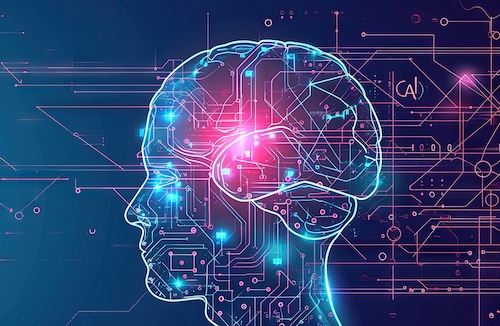Key points:
In the realm of education, the integration of technology–and particularly artificial intelligence (AI)–with traditional human-led instruction is a topic of increasing relevance and debate. As educators and technologists, we must critically assess the strengths and limitations of both AI and human educators to optimize educational outcomes.
In exploring the pros and cons of AI instruction versus human educator instruction, a hybrid model emerges that leverages the strengths of both to maximize learning and knowledge retention.
The advantages and limitations of AI in education
AI in education brings numerous advantages, such as personalization, accessibility, and scalability. AI excels at delivering personalized learning experiences by analyzing extensive data on a student’s performance to tailor educational content to individual learning paces and styles, potentially boosting engagement and efficacy.
One of the most transformative aspects of integrating AI into education is its potential to improve educational equity. AI can bridge the gap between diverse educational environments, including students in remote areas or those with specific needs who may otherwise lack access to human educators, by providing resources that were traditionally available only to students in well-funded schools.
For instance, AI-driven platforms can offer personalized tutoring sessions, language translation services, and adaptive learning paths that cater to students from various backgrounds and with different learning abilities. This democratization of access can significantly level the playing field, ensuring that every student has the opportunity to succeed regardless of their socio-economic status or geographic location. Moreover, AI can assist thousands of students simultaneously, offering consistent educational quality across various subjects without suffering from fatigue.
However, AI instruction also has its limitations. AI lacks emotional intelligence, often struggling to engage in empathetic interactions, motivate students during challenging periods, or adapt its teaching style based on emotional cues. Its content generation, while informative, typically lacks the creativity and nuanced explanations that skilled educators provide, which are crucial for teaching complex or abstract concepts. Additionally, the use of AI in education raises significant ethical issues, including concerns about data privacy and the potential for algorithmic bias.
The strengths of human educators and cheir Challenges
Human educators are unparalleled in their ability to provide emotional support and foster an environment conducive to social learning. They excel at motivating students, managing classroom dynamics, and offering personalized feedback based on nuanced observations. Teachers’ adaptability and creativity allow them to modify their instructional strategies dynamically, providing creative and contextually rich explanations that resonate with diverse student groups. Furthermore, human interaction plays a vital role in instilling values and ethics in students, an area where AI cannot contribute effectively.
Despite these strengths, human educators face several challenges, including scalability issues and variability in teaching quality. Human resources are finite, and educators can only engage with a limited number of students at a time, which may affect the consistency and reach of educational delivery. Moreover, the quality of instruction can vary significantly between educators, influenced by factors such as training, experience, and personal attributes.
To maximize the benefits of both AI and human educators, a hybrid approach is recommended. AI should be used as a support tool to handle administrative tasks such as grading and scheduling, and to provide supplementary personalized learning aids like simulations and adaptive quizzes. Human educators should remain the primary facilitators of learning, using their unique skills to deliver complex content, inspiring students, and building relationships. The curriculum should be designed to integrate AI tools seamlessly with human-led sessions, enhancing interactivity and engagement through multimedia resources and real-time analytics. This hybrid model aims to create a more inclusive, efficient, and effective educational system that not only imparts knowledge but also fosters a holistic developmental environment.
The future of education lies not in choosing between AI and human educators but in effectively integrating both to serve the diverse needs of students. By embracing a balanced approach, we can create a more inclusive, efficient, and effective educational system that not only imparts knowledge but also fosters a holistic developmental environment that prepares students to succeed in an increasingly complex world.


